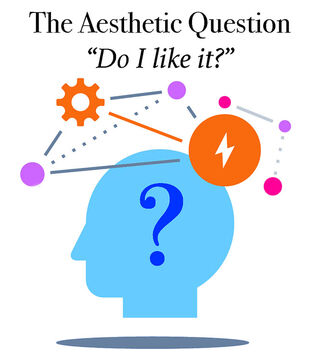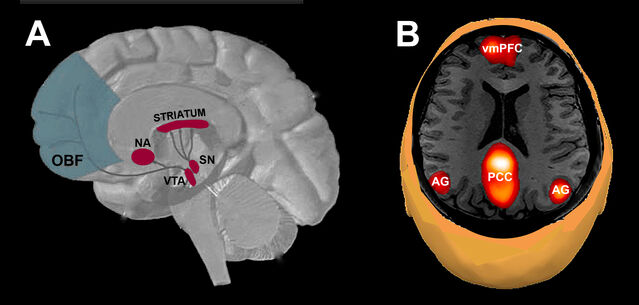
Whenever we come across something new—a new product, movie, book, song—we invariably ask ourselves, “Do I like it?” Indeed, we enjoy going to art museums for the sole purpose of addressing this simple query, which I call the “aesthetic question.”
From an evolutionary perspective, our brains are geared to determine what we like or dislike. Imagine you’re an early hominid foraging through the woods and you come across a never-before-seen fruit. You take a taste and ask: Do I like it? Your decision to eat more or spit it out could determine your survival as the fruit could provide nourishment (live!) or causes illness (die!).
To like or dislike something or someone is an emotional response that we make daily, such as deciding on what to eat, where to go, and with whom we want to socialize. It engages a multitude of psychological processes that are at the heart of how we make decisions.
We sometimes view such judgments as spontaneous and intuitive—that is, as “gut reactions” (could this be related to our fruit example?). Indeed, some things are preferred instinctively, such as the taste of sweet things or symmetry in faces. Yet the preponderance of our aesthetic decisions are based largely on past experiences and prior knowledge. That is, most of the things we like—foods, drinks, clothes, music, movies—are acquired tastes.
How the brain processes liking judgments has spurred the burgeoning field of neuroaesthetics. One thing is clear: There is no “aesthetic” or “art” center in the brain. Instead, when we encounter something that gives us pleasure, such as artwork, a song, or even eating chocolates, we recruit a set of brain processes related to pleasure-seeking (dopamine reward system, which includes the striatum, nucleus accumbens [NA], substantia nigra [SN], and ventral tegmental area [VTA} and emotional regulation (orbitofrontal cortex [OBF]) (see figure).
Also involved are brain areas that comprise the default mode network, a cortical circuit associated with internal thought, such as self-reflection, ruminating, and reminiscing. This network includes the ventromedial prefrontal cortex (vmPFC), posterior cingulate cortex (PCC), and lateral parietal regions (angular gyrus [AG]) (see figure).
In addition to these regions, there are a host of sensory-related activity as well as knowledge-related activity associated with the specific type of stimulus used to generate a liking response. Thus, as with many complex mental functions, addressing the aesthetic question is a whole-brain process.

Professional critics, such as those who review books, movies, or restaurants, are paid to use their knowledge and prior experiences to justify their aesthetic preferences. When considering a new purchase, you should justify preferences by asking: Why do I like (or dislike) this product? Why does it interest me? How does it compare with other similar products?
Keep in mind that the more you know and the more experiences you have, the better you’re able to articulate the reasons for your preferences. You might enjoy drinking wine. With education and practice(!), you may begin to appreciate how various grapes and regions produce wines with distinctive sensations. By getting emotionally involved and evaluating why you like something, you enjoy yourself and become educated at the same time.
When I speak to educators about ways to improve student learning, I encourage them to use the aesthetic question during class discussions. Rather than quizzing students about some recently learned material, such as a novel or book chapter, ask them: Did you like it? Was it interesting? Why or why not?
By asking the aesthetic question, students get personally involved and become mindful of their response. There is no right or wrong answer, as it’s merely a matter of opinion. Such open-ended questions engage students and offer a gateway for discussion. It also applies MARGE—an acronym for my five principles of efficient learning: motivate, attend, relate, generate, evaluate.
The aesthetic question motivates by bringing emotion to the learning experience, focuses attention on relevant information, relates learned material to other experiences, forces the generation of information, and requires students to evaluate what they’ve learned. As a take-home assignment, one could ask students to act as if they are a professional critic and write a review of an assigned novel or indeed any recent encounter—a TV program, movie, product, restaurant.
When we ask the aesthetic question of others (Did you like it?), we engage in social interaction with the sharing of opinions and thoughts. We learn from the analysis of others and can determine if we might want to read the book, watch the TV program, or go to the restaurant (or not).
While discussing and generating our own opinions, we are forced to organize thoughts and evaluate our viewpoint, which in itself enhances our own memory for the material. Thus, we should all consider the aesthetic question while chatting with friends or sitting around the dining room table. (By the way... did you like my post?)
References
Shimamura, A. P. (2018). MARGE: A Whole-Brain Learning Approach for Students and Teachers. Beholder Press [Download Free PDF HERE]




